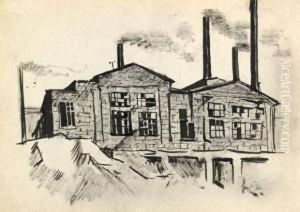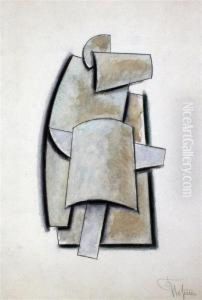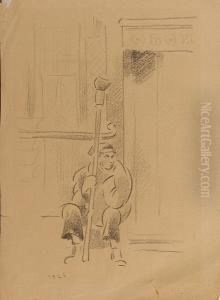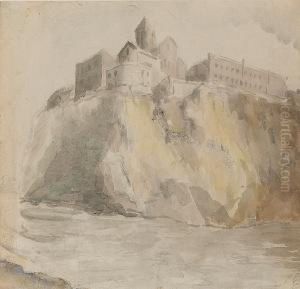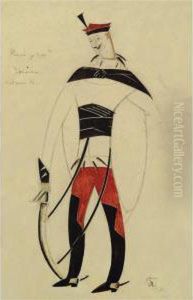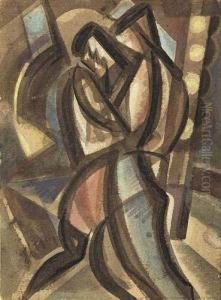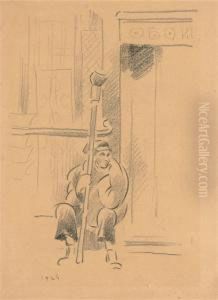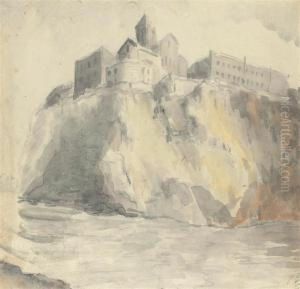Wladimir Tatlin Paintings
Wladimir Tatlin was a pivotal figure in the Russian avant-garde movement, whose innovative approach to art, architecture, and design left a lasting legacy on the development of modernist principles. Born on December 28, 1885, in Moscow, Tatlin's early life was marked by a series of relocations and a diverse education that exposed him to a variety of artistic influences. His initial foray into the art world was through icon painting and the study of traditional Russian art forms, but his interests quickly expanded to encompass a broader range of styles and disciplines.
Tatlin's artistic vision was profoundly influenced by his experiences and observations of the world around him. In the years leading up to the Russian Revolution of 1917, he became increasingly involved with the avant-garde community, experimenting with abstract forms and materials in a quest to bridge the gap between art and life. This period saw the creation of his Counter-Reliefs, a series of three-dimensional constructions made from everyday materials that challenged traditional notions of sculpture and spatial perception.
Perhaps the most emblematic of Tatlin's contributions to the avant-garde was his design for the Monument to the Third International, conceived in 1919-1920. This ambitious project, also known as Tatlin's Tower, was intended as a towering symbol of modernity and the Bolshevik vision for a new social order. Although it was never built, the tower's design—a spiraling iron and glass structure that would have dwarfed the Eiffel Tower—remains an iconic representation of revolutionary artistic aspirations and constructivist aesthetics.
Throughout the 1920s and 1930s, Tatlin's focus shifted toward theater design and the potential for art to serve practical and educational purposes in the Soviet Union. Despite the initial enthusiasm for his revolutionary ideas, the changing political climate under Stalin and the rise of Socialist Realism as the dominant artistic mode led to a gradual sidelining of his work. Tatlin continued to teach and create, but his later years were marked by a decline in visibility and official recognition.
Wladimir Tatlin died on May 31, 1953, in Moscow. His legacy, however, endures in the foundational principles he laid for constructivism and his unwavering belief in the power of art to transform society. Tatlin's work and ideas continue to inspire artists, architects, and designers, maintaining his status as a key figure in the history of modern art.
